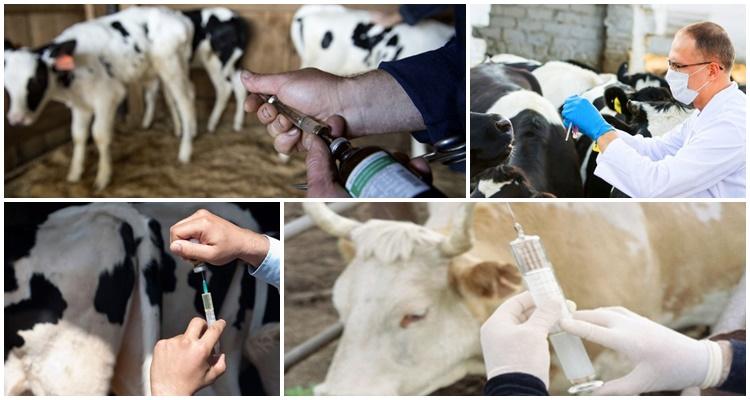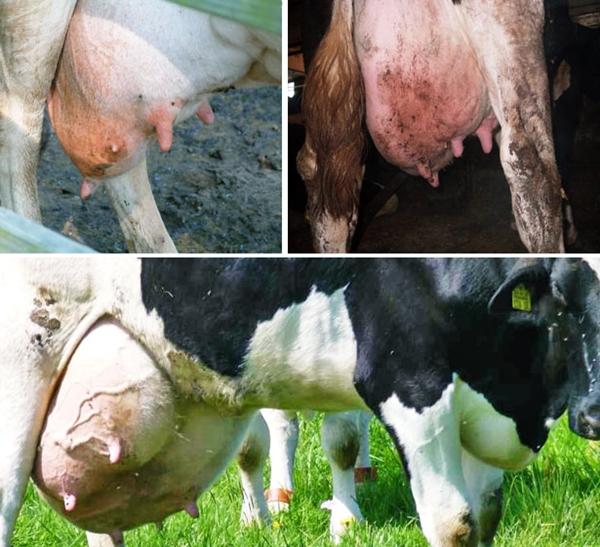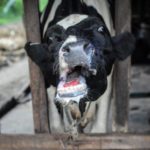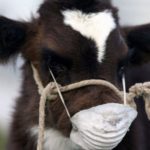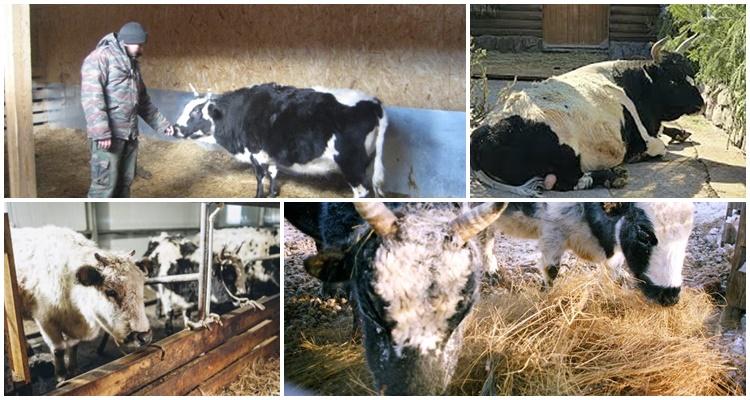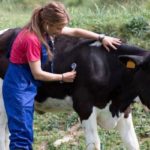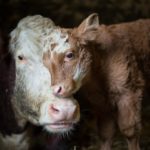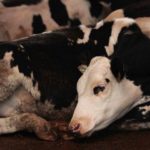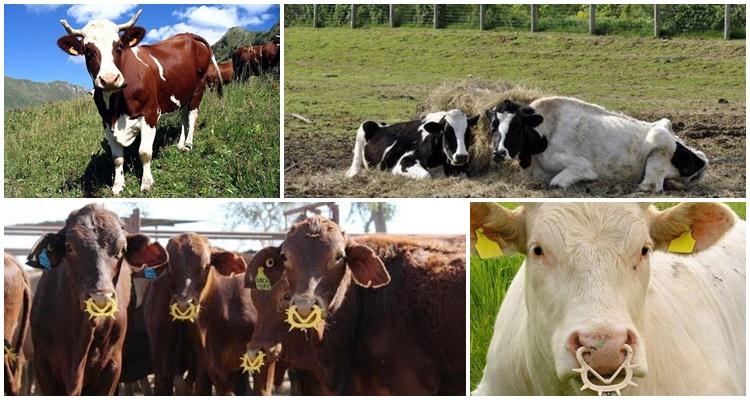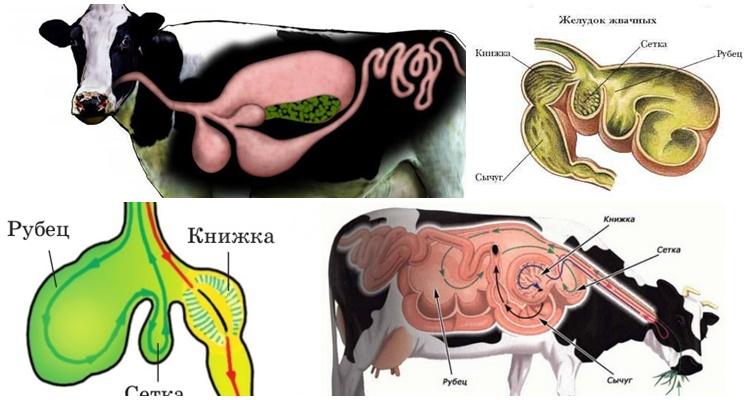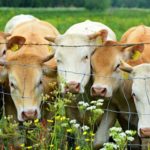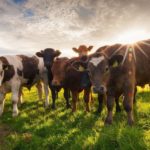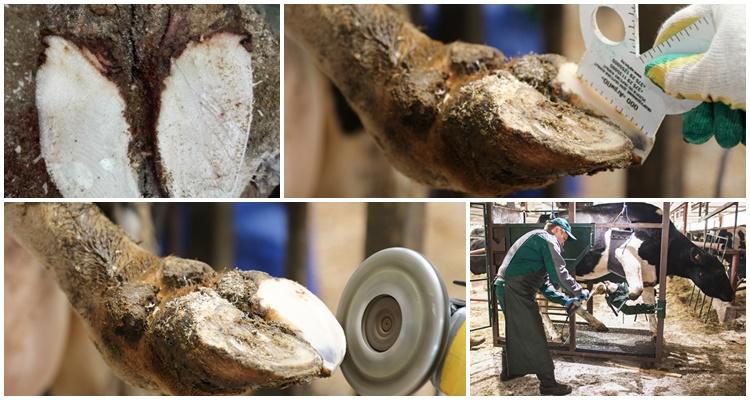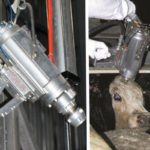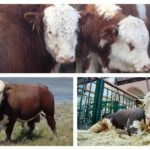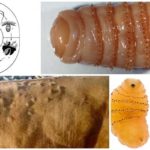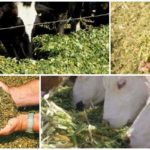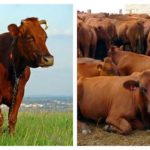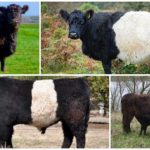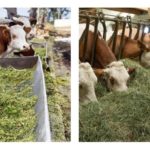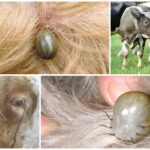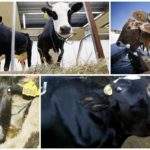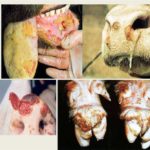Farmers pay a lot of attention to caring for their pets. The productivity of the breed depends on nutrition, regime and immunity. Diseases are dangerous for cows. It is important to know what ailments animals are susceptible to and take action in time. Some pathologies can disable an entire herd. The well-being of the entire livestock depends on the methods of treating cattle.
List of diseases in cattle and methods of their treatment
Cows are susceptible to various infections. Cattle also suffer from pathologies of the intestinal tract, blood, gynecological problems and other ailments. Some diseases lead to the death of cows.
Infectious diseases
A sick cow often infects the rest of the herd. A high risk of spread is characteristic of infectious diseases. A reference book on veterinary medicine will be useful for farmers. The manual outlines methods of treating common ailments and preventive measures. One of the main symptoms of the disease is body temperature. During infections it increases. Other signs:
- The animal loses its appetite.
- Cold ears.
- The level of milk production decreases sharply.
- A sick cow's eyes are dull and her nose is dry.
- The cow's fur becomes brittle and falls out.
- There is a feverish state, the animal is trembling.
Such manifestations indicate the onset of the disease. The most common types are:
- Brucellosis provokes problems with joints, affects the genitals of cows, and inflammation of the testicles is observed in bulls. Antibiotics are prescribed to fight bacteria. Lexoflon is given for 5 days.
- Ringworm is also characterized by the appearance of gray patches. The affected areas gradually increase in size. Sore spots are treated with a fungicidal solution. The vaccine is used as a preventive measure.
- Chronic actinomycosis causes tumor formation. Purulent fistulas break out inside or outside the body. Antibiotics used to prick the lump, as well as injections of potassium iodide, help.
The diagnosis and treatment regimen are agreed upon with a veterinarian. Attempts to treat cattle on your own can end sadly.
Udder diseases
Udder mastitis occurs in cows during lactation and causes severe discomfort. Antibiotics are used for treatment. But in case of early diagnosis, it is possible to use compresses based on medicinal infusions.
Other types of diseases:
| Illness | Manifestations | Treatment |
| Furunculosis | Abscesses form on the udder | The affected areas are lubricated with iodine, the abscesses are opened and treated with disinfectants |
| Edema | Decrease in milk production | Reduce the proportion of fresh grass and grains in the diet |
| Udder bruise | Bruising and decreased milk supply | Rest and cooling compresses |
| Cracks | Skin becomes dry | Make poultices, lubricate sore spots with Vaseline or antiseptics |
Udder diseases are caused by injuries, poor care and improper milking technique. Prevention will include regular inspections of cattle and compliance with hygiene measures.
Parasitic
This group includes diseases such as piroplasmosis, cysticercosis, thelaziosis and others. Cows can become infected from other animals while walking; fleas, lice or ticks are dangerous.
General signs of the disease:
- The animal looks depressed.
- Cows lose their appetite.
- Frequent diarrhea.
- Fast weight loss.
- A cough occurs and pneumonia may develop.
- Excessive accumulation of worms leads to death.
Antihelminthic drugs are prescribed for treatment. It is better to discuss the dosage with your veterinarian.
Skin problems
Cows often suffer from eczema, dermatitis, chickweed and other skin problems. Diseases affect milk supply, lead to weight loss and aggression. As a preventive measure, veterinary medicine has adopted regular examinations of cows by specialists. But some symptoms are easily diagnosed by farmers themselves.
Cattle often develop eczema. It can be triggered by dietary errors, chronic diseases or a reaction to medications. If the formation of ulcers is caused by a tight collar or ticks, it is enough to eliminate the source of irritation. In other cases, you cannot do without the help of a veterinarian.
The doctor is also called to examine the severe swelling at the wound site. An abscess requires surgery. Independent attempts to cope with inflammation are more likely to end in a deterioration of the animal’s condition rather than in recovery.
Blood diseases
One of the most dangerous diseases affecting cattle is leukemia. The infection affects the hematopoietic system. Initially, the disease is not diagnosed. Symptoms appear at the final stage of the disease:
- The main symptom is enlarged lymph nodes.
- Reduced milk production.
- Severe exhaustion.
The disease leads to the death of the animal. A vaccine has not yet been developed. When the diagnosis is confirmed in one individual per Leukemia is checked for all cattle. Piroplasmosis, which is transmitted through tick bites, is also dangerous for cows. Signs of pathology:
- The animal stops eating.
- The body's thermoregulation is disrupted.
- Movements are difficult.
- Pulse increased.
It is important to make a diagnosis on time. At an early stage, the disease is guaranteed to be treatable. Infected cows are isolated and given injections, supportive medications and chemotherapy.
Gastrointestinal diseases
Poor nutrition leads to digestive system disorders. Such diseases are considered non-contagious.The disease does not spread to the rest of the herd, but can lead to the death of the cow. Measures to save the animal are taken at the first suspicion of danger.
Reticulitis and pericarditis
Diseases occur when a cow swallows sharp objects. In the first case, a needle or piece of wire injures the esophagus. But sometimes they lead to damage to the tissue of the heart membrane.
Main symptoms:
| Signs of reticulitis | Pericarditis |
| Decreased appetite, sometimes complete refusal to eat, constipation | Pulse rises to 120 beats per minute |
| Fever | Weak muscle tone |
| Lethargy and cautious movements | The cow takes unnatural poses, spreading her forelimbs wide and bringing her hind limbs together |
With traumatic reticulitis, the foreign body is removed using a magnetic probe. In severe cases, surgical intervention is resorted to. If peritonitis is suspected, antibiotics, ichthyol or magnesium sulfate are used. If the heart is affected, the bull or cow is sent to slaughter.
Tympany of the rumen
Excessive consumption of fermentable foods leads to increased gas formation. With tympania, the scar begins to put pressure on the diaphragm, which causes oxygen starvation.
If the animal is not helped, the disease will lead to death. The cow is given a massage and given products that help eliminate gases.
Esophageal blockage
An unpleasant phenomenon occurs when feeding cattle with large pieces of solid food. Sometimes the blockage is caused by foreign bodies, which cause swelling of the internal organs and gastric stoppage. The condition will be alleviated by vegetable oil, which will help push through the stuck object. If the cow does not swallow on her own, use a probe.
Viruses
Viral diseases cause serious consequences. Untimely assistance can lead to loss of livestock.
Viral diarrhea
Some viruses cause intestinal inflammation. Microorganisms live at high temperatures and retain the ability to reproduce for 3 years.
Manifestations of the disease:
- Failures in thermoregulation processes.
- Cardiopalmus.
- Coughing.
- Diarrhea accompanied by bleeding.
- The appearance of ulcers in the mouth and purulent discharge from the nasopharynx.
The disease is especially dangerous for young animals. A weak body cannot cope with the virus. Mortality rates among calves sometimes reach 90%. The blood serum of recovered animals is used as a vaccine.
Lumpy dermatitis
A relatively new disease. The first case of pathology was registered in 2015. The virus tolerates freezing, and at 4 degrees above zero it persists for up to six months.
The strain, when ingested, causes in cattle:
- The appearance of ulcerative formations on the eyelids and loss of vision.
- Skin rashes.
- Loss of appetite and weight loss.
- Nasal discharge, copious amounts of saliva.
- Increased body temperature.
Vaccination of livestock reduces the risk of infection.
Other
Other diseases of cattle include hoof diseases. The pathology does not lead to the death of livestock, but it does affect the productivity of the herd.
Common problems:
- The infection that enters the wound during bruises causes inflammation of the tissue - phlegmon of the corolla. Compresses and washing of the affected organ are used as first aid for injury.
- Unsanitary conditions for keeping cattle provoke laminitis - the accumulation of fluid in the hoof area. The sore spot is cut off. The cow is moved to a clean stall.
- Red bumps that appear on the extremities are called strawberry disease.To improve the condition of the animal, it is enough to review the diet and strengthen hygiene measures.
Any injuries the livestock receives require attention and timely treatment.
What diseases pose a danger to people
A number of diseases are harmful not only to the cattle population, but also threaten human life. The following pose a mortal danger:
- Rabies causes aggression, exhaustion and convulsions in cows. The infection is spreading rapidly. There are no treatment methods. Once the diagnosis is confirmed, the animal is killed and the carcass is burned.
- Foot and mouth disease is characterized by the appearance of aphthous lesions. If the disease occurs in a benign form, the animal recovers after 2 weeks. For treatment, serum is used, the affected areas are treated with antiseptics and syntomycin ointment. Malignant formations lead to the death of cows.
- With anthrax, a fever begins, the mucous membranes acquire a bluish tint. The disease leads to intoxication of the body, the appearance of carbuncles and then to the death of animals. To prevent infection of the herd, quarantine is introduced, premises are disinfected, and corpses are destroyed.
To reduce the risk of a serious problem, it is necessary to maintain hygiene measures and regularly conduct veterinary examinations of cattle. It is important for farmers to know the signs of common pathologies. Timely measures taken often lead to the animal’s recovery. Early detection of incurable diseases will allow saving the rest of the population.

